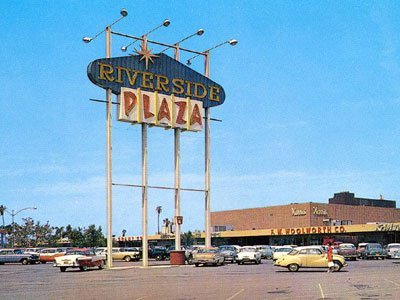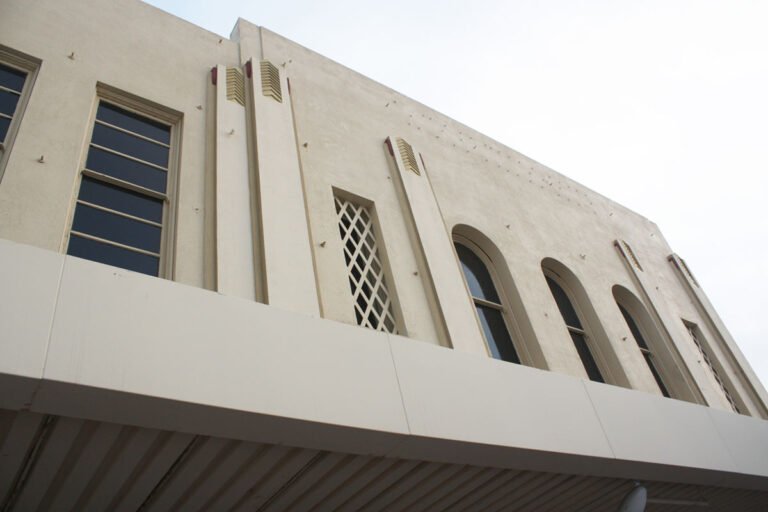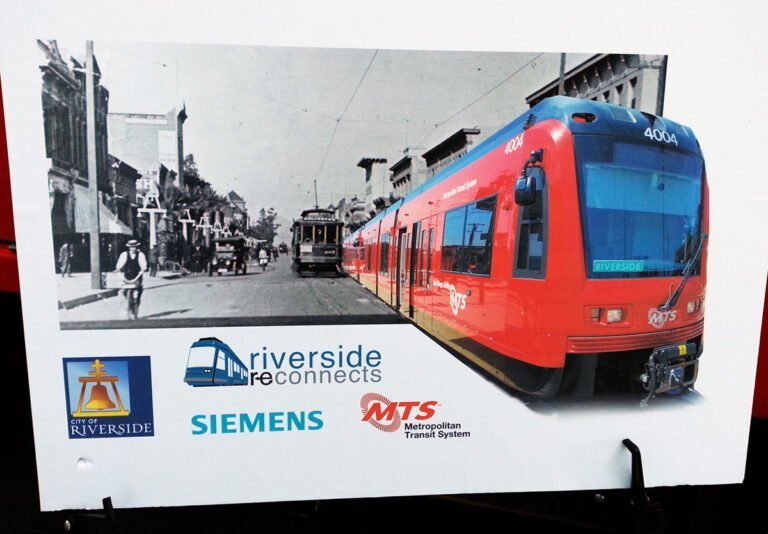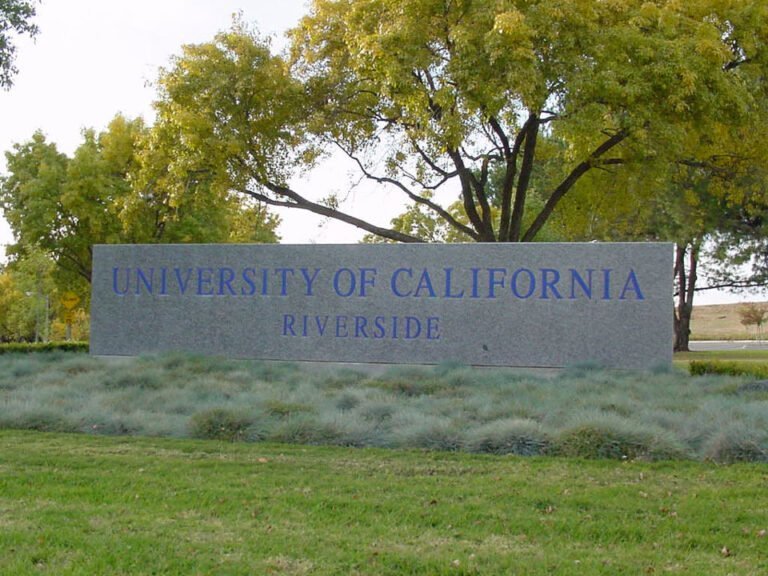Votes on Fox Plaza delayed
Last week, two city commissions delayed for a month their votes on the much anticipated Fox Plaza development proposed for downtown Riverside.
Members of both the Cultural Heritage Board and Planning Commission — comprised of city-appointed residents — said the postponement was necessary until after the public comment period for the Draft EIR is closed. Once voting is complete, their recommendations will be forwarded to the City Council for further consideration.
Located on prime parcels along Market Street between Fifth Street and Mission Inn Avenue, the three-phase Fox Plaza is the largest of Riverside’s mixed-use developments planned for downtown. With upwards of 532 residential units, 76,000 sq. ft. of restaurant/retail space, a Hyatt Place hotel and 1,693 spaces of underground/garage parking, the project is expected to boost downtown pedestrian traffic, particularly after-hours and during the weekends:
Cindy Roth, president of the Greater Riverside Chambers of Commerce, said downtown is empty after 5 p.m. and Fox Plaza would spark nighttime vitality.
“This project is instrumental to downtown going forward,” Roth said.
“I think it really is a major step in the right direction,” Cultural Heritage Board member Dave McNiel said.
Riverside Press-Enterprise – April 18, 2008
Thus far, only the Hyatt Place hotel has received City Council approval. Proposed for across Fifth Street from the 12-story Marriott, the hotel should help bolster multi-day bookings at the adjacent convention center.
Though we have high hopes for the project and its potential to strengthen downtown’s recent re-emergence, some have questioned its scale:
“Six floors are not compatible” with surrounding buildings, (Planning) commission member Tim Maloney said.
Riverside Press-Enterprise – April 18, 2008
We agree the scale is a bit large relative to some surrounding uses. However, the project’s height of 6 and 7 stories falls well below the area’s tallest structures. Likewise, the density is more than appropriate for downtown, where suburban densities — and setbacks — simply do not belong.
Moreover, both the city and residents alike must begin accepting limited amounts of higher densities in the downtown core, if only to help bring more balance to the current landscape — and choice to the marketplace (both commercial and residential). As we’ve stated before, the city simply cannot continue building outward.
Finally, though it’ll be difficult seeing the loss of the Stalder Building, which once housed the city’s first permanent fire station in the 1890s and sports a 1926 facade unification by noted Riverside architect G. Stanley Wilson, we believe the long-term potential of Fox Plaza is worth the compromise.
PDFs: Draft EIR – Project Description (4.8 mb) | Project Alternatives (488 kb)
Related
- Riverside Press-Enterprise – Riverside panels delay votes on Fox Plaza plans (April 18)
- MetroPacific Properties – Fox Plaza
Previous
- RaincrossSquare.com – Mixed-use projects picking up steam (July 2007)
- RaincrossSquare.com – Moving dirt at m sole’ (March 2007)
- RaincrossSquare.com – Out & About – 01/21/2007 (Jan. 2007)








This alternative sounds intereseting…
“Alternative Five: Stalder Façade Alternative. Redevelopment of the project site with urban uses similar to the proposed project, but the historic Stalder Building façade would be preserved, with a ten‐foot setback between the façade and any new construction. This Alternative proposes the removal of all other historic buildings on the project site. Unit counts, retail square footage, and parking provisions would be unchanged, with units and parking displaced by the façade preservation incorporated elsewhere in the project. As a result, building heights in Blocks B and C would be increased in height from six to eight stories.”
I don’t know, the project might really look funky with two 8 stories, a 6 story and then the 1 story Stalder. I don’t understand why they can’t just build on top of the Stalder façade and just reinforce the nessessary parts. My first impression was that the façade in the concepts/plans was the real façade. I’m still not clear on if it is or isn’t 😉 .
And even though it’s probably too costly or simply impossible to do, I think it would be cool if they could just pick up the structure and move it next to the theater where those other ugly shops are currently standing. Have the front face out to Market, and everything’s good to go. Another historic structure saved, and the Fox Plaza can go on untampered with. The Stalder at the new location would probably thrive with it’s new surroundings, and the city could still build the retail along 6th St. and merge it with the Stalder. Oh well, wishful thinking.
It is a shame that the City of Riverside continues to destroy its history. Not only do I find the Stalder building beautiful, I find it shameful that the city has put family-owned businesses out in favor of national-brand corporate interests. Pretty soon downtown Riverside’s unique charm will be supplanted by the corporate homogeneity that defines the landscape of inland urban sprawl. Instead of demolishing the Stalder building, why not renovate it? Riverside needs to stop trying to effect this upscale downtown Pasadena fantasy. I like downtown the way it is. Sure, it could use a few tweaks here and there. If anything, get rid of inane places like Antonious Pizza and Pacific Stiks. Maybe put a few more bars downtown? Well, I really like those urn-looking things atop the Stalder Building. It’s a sad state in this city. Just look at nature disappearing around the Alessandro Arroyo!
I fail to see what is so historically significant about the Stalder Building. It does boast a nominally interesting façade, but beyond that, it’s just a small commercial building with a minimal history of public use, as a fire station. What’s more is that the building is only one story – the second-floor windows above are decorative only – nowhere near the density that is appropriate for the downtown area. Furthermore, the southwestern corner of the building, on a prominent intersection, is largely blank brick wall.
I’m in favor of keeping a portion of the building’s façade as a reminder of the previous streetscape, but the potential economic and cultural benefits of what is proposed far, far outweigh the benefits of preserving something of little impact and debatable significance.
(Pub: May 14 2008)
This alternative sounds intereseting… “Alternative Five: Stalder Façade Alternative…”
@Jason – We too find that particular alternative interesting as well. And, according to the Draft EIR, it could still meet 14 of 15 “Project Objectives” established in accordance with the Downtown Specific Plan. The real question is whether the costs associated with the additional floors and facade preservation are feasible (we certainly think it’s worth a second-look).
One thing we do not want to see, however, is the demolition of the Stalder — or any other building — until construction of the project is certain. The last thing the immediate area needs is another asphalt parking lot due to a stalled or unbuilt project. The city would do well to limit this possibility as best it can via the permitting process.
__________
@Michael – Thanks for the comments.
Though no city is perfect, we feel Riverside – when compared with the majority of Southern California – has done an above average job over the years with regards to historic preservation. Take a look at Seventh Street (oops…Mission Inn Avenue) downtown – with few exceptions, the street remains relatively intact. Sure, we’ve lost a few key buildings downtown and there’s always room for improvement, but we must remember the city also has a duty to balance preservation with progress – a very delicate balance indeed.
With regards to Pasadena…there are few downtowns within Southern California that have the same potential to replicate some of that city’s success, which downtown Riverside happens to be one of them. However, one must not forget that downtown Pasadena of recent did not blossom overnight – it has taken nearly 30 years of both preservation and redevelopment (not too mention both homegrown and corporate entities). Same can be said for San Diego’s “Gaslamp District” and, more recently, with the resurgence seen in downtown Long Beach. All three cities have included various forms of mixed-use components – a critical, “anti-sprawl” element missing in many downtowns for several decades.
In the end, we feel historic preservation and progress need not be mutually exclusive. Although there will be compromises – and even casualties – on both sides along the way, indeed there is room for both.